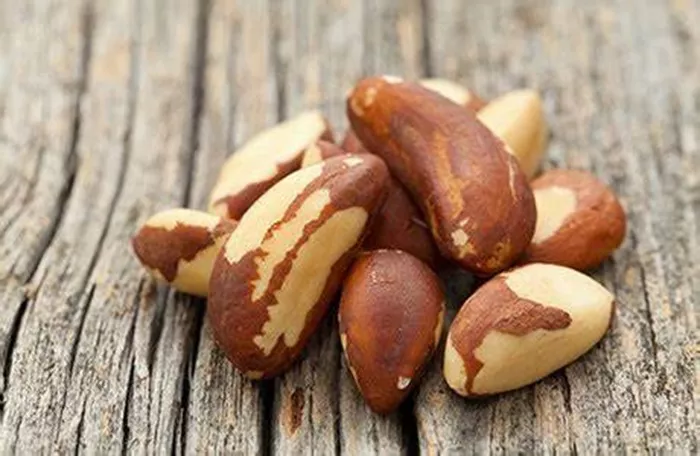Tendons are the fibrous cords that connect muscles to bones, allowing the body to move with grace and strength. Every subtle facial expression, flick of the wrist, or stretch of a toe is made possible by these resilient structures. But what happens when a tendon is cut? Whether caused by an accident with a knife, a sports injury, or a surgical procedure, a severed tendon is a serious injury. It can not only limit movement but also lead to long-term complications if not properly treated. Healing a cut tendon is not a simple or short process. It requires medical intervention, time, patience, and often a structured rehabilitation plan. In this article, we’ll explore the intricate journey of tendon healing—what it involves, how long it usually takes, and what factors can speed up or delay recovery.
Understanding tendon injuries is important for anyone interested in both health and beauty. In the beauty industry, where hand dexterity, facial expression, and body control are key, the integrity of tendons is crucial. A healthy tendon not only supports functional movement but contributes to elegant posture, symmetrical balance, and even the firmness of the skin. When one is injured, the body’s harmony is disrupted. Let’s dive deep into what happens when a tendon is cut, how long it takes to heal, and how recovery can be managed to restore both form and function.
What Is a Tendon and What Happens When It’s Cut?
Tendons are strong, flexible tissues made primarily of collagen. They are built to handle tension and transmit the force from muscle to bone. Unlike muscles, tendons do not have a large blood supply, which makes healing much slower when they are injured.
When a tendon is cut—either partially or completely—it loses its ability to transmit muscle force. A partial cut may cause pain and weakness, while a complete rupture results in loss of movement. For example, if the Achilles tendon is completely severed, the person cannot push off the foot to walk or stand on tiptoe. If a tendon in the hand is cut, it may be impossible to bend or straighten a finger.
Right after a tendon is cut, bleeding, swelling, and pain occur. The area might become bruised and may lose function entirely. This is a medical emergency, and immediate attention is required to prevent permanent damage.
What Is the Healing Process for a Cut Tendon?
Tendon healing goes through three main stages: inflammation, proliferation, and remodeling. Each phase has distinct characteristics and timeframes.
The inflammation phase lasts for the first few days. Blood clots form around the injury site, and the body sends white blood cells to clean up damaged tissue. This is accompanied by swelling and pain. The tendon ends begin to send out signals that attract fibroblasts—cells that will build new collagen.
The second phase, proliferation, usually lasts from one to six weeks. In this stage, the body starts producing new collagen fibers, mostly type III collagen, which is not as strong as the original type I. The fibers are laid down in a disorganized pattern, forming a scar-like tissue that connects the ends of the tendon. Although fragile, this connection allows for limited movement.
The final stage is remodeling, which can take up to a year. The type III collagen is gradually replaced by stronger type I collagen. The fibers become more organized and aligned with the direction of force, increasing the tendon’s strength. Full recovery depends on how well this new tissue integrates with the existing structure.
How Long Does It Really Take to Heal?
The total time it takes for a cut tendon to heal varies based on the location and severity of the injury, the patient’s age and health, and the quality of treatment. In general, tendon healing follows a predictable timeline:
First 1–2 weeks: The focus is on managing pain and preventing further damage. Surgical repair is often performed during this time for complete cuts.
Weeks 3–6: Collagen production is underway. Gentle movement may begin under medical supervision to avoid stiffness and adhesions.
Weeks 6–12: The tendon becomes stronger. Physical therapy intensifies to improve range of motion and rebuild strength.
3 to 6 months: Most tendons are considered structurally healed. Function continues to improve.
6 to 12 months: Full recovery. Tendon regains near-normal strength and elasticity.
Even after a year, some people experience stiffness, weakness, or limited motion. That’s why ongoing care and exercise are essential even after healing appears complete.
What Factors Influence Tendon Healing Time?
Not all tendons heal at the same rate. The Achilles tendon, for example, has a poor blood supply and takes longer to heal than tendons in the hand. Age also plays a big role—children and young adults typically recover faster than older individuals.
Overall health conditions such as diabetes, rheumatoid arthritis, and obesity can delay healing. Smoking, poor nutrition, and sedentary habits also contribute to slower recovery. On the other hand, a healthy lifestyle with balanced nutrition, hydration, and exercise helps speed up the process.
The quality of surgical repair matters too. Advances in microsurgery and suture techniques allow for better alignment of the tendon ends and reduced risk of scarring. The use of platelet-rich plasma (PRP) injections, stem cell therapy, and collagen scaffolds are also being explored to enhance healing.
Why Is Immobilization Followed by Movement?
After surgical repair or initial healing, tendons must be protected with a splint or cast to prevent re-injury. But keeping the tendon completely still for too long can lead to stiffness and scar tissue, which restricts movement.
Doctors use a balance of immobilization and early controlled motion. For example, in flexor tendon repairs in the hand, patients often begin gentle, guided movement within the first week. This helps prevent adhesions without putting too much strain on the healing tissue.
The timing and extent of movement must be carefully controlled by a physical therapist. If done right, it supports healing and improves long-term outcomes.
What Role Does Physical Therapy Play in Recovery?
Physical therapy is a critical part of tendon recovery. It begins as soon as it is safe to move the joint and may continue for many months. Early exercises focus on restoring flexibility, preventing scar tissue formation, and maintaining circulation.
As the tendon gets stronger, therapy shifts to strength training and coordination. For hand tendons, this may include grip exercises, fine motor tasks, and stretching. For larger tendons like the quadriceps or Achilles, therapy includes walking drills, resistance bands, and functional movement training.
Physical therapy not only restores function but helps rebuild confidence. Many patients are afraid to move after a tendon injury. Gradual, guided therapy reassures them that healing is possible and movement is safe.
Can a Cut Tendon Heal Without Surgery?
Some partial tendon injuries can heal without surgery. This usually applies to tendons that are not completely severed or tendons in areas that are not under high stress. For example, minor wrist tendon injuries or shoulder rotator cuff strains can heal with rest, ice, anti-inflammatory medication, and physical therapy.
However, a completely cut tendon almost always requires surgery. Without surgical repair, the tendon ends will not reconnect, and movement in that area will be lost permanently. Delayed surgery may also make it harder to reattach the tendon due to retraction and scar formation.
It’s critical to get medical evaluation right away after a suspected tendon injury. Waiting too long can reduce the chances of a full recovery.
What Are the Long-Term Outcomes of Tendon Injuries?
With proper treatment and dedication to rehabilitation, most people recover from tendon injuries and return to normal activities. However, the outcome depends on many factors including the severity of the cut, the timeliness of treatment, and how closely the rehabilitation plan is followed.
Some people experience lasting stiffness, especially in joints like fingers or ankles. Others may feel tightness or mild pain during heavy use. In rare cases, the tendon may re-tear or require a second surgery.
Despite these risks, modern medical techniques and rehabilitation protocols have made tendon repair more successful than ever. Athletes, dancers, surgeons, and beauty professionals—people who rely on fine movement and strength—can often return to work or performance with little or no compromise.
How Can You Support Healing Naturally?
The body has a remarkable ability to heal, and you can support it with smart choices. Good nutrition plays a major role. Collagen-rich foods such as bone broth, chicken skin, and fish help supply building blocks for tendon repair. Vitamin C supports collagen synthesis, while zinc and magnesium are essential for tissue repair.
Staying hydrated is also important. Tendons need water to maintain elasticity and to transport nutrients. Sleep is another essential factor. During deep sleep, the body releases growth hormone and performs cellular repair. Avoiding smoking and reducing alcohol intake can also significantly improve healing outcomes.
Gentle stretching, once approved by a doctor or therapist, keeps surrounding muscles flexible and improves blood flow. Heat and massage therapy may help relax tight tissues and reduce discomfort during recovery.
Conclusion
A cut tendon is not just a physical injury—it’s an interruption of motion, expression, and beauty. Whether you’re a makeup artist who needs finger dexterity, a dancer whose feet must flow, or simply someone who values the elegance of motion, tendon health is vital. Healing a tendon requires more than just time; it demands intention, discipline, and care.
The journey from injury to full recovery can be long, often stretching over several months. But with the right treatment, consistent therapy, and support, most people regain their full function and strength. In the world of beauty and beyond, the quiet power of healing is a story worth telling—and living.
Let this serve as a reminder that the body is not only capable of breaking—it is also wonderfully capable of healing.
Related Topics

































